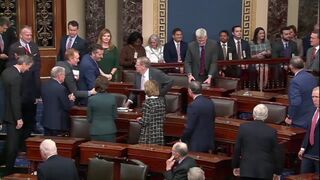Trust
How Has Government in the U.S. Become “The Problem"?
The role played by public interest groups in undermining trust in government.
Posted August 3, 2021 Reviewed by Chloe Williams
Review of Public Citizens: The Attack on Big Government and the Remaking of American Liberalism. By Paul Sabin. W.W. Norton & Company. 254 pp.
In 1981, President Ronald Reagan declared that “government is not the solution to our problem; government is the problem.” Over time, a growing majority of Americans have endorsed Reagan’s view. In 1958, 73 percent of Americans indicated they trusted government to do what is right, most or some of the time. Since 2007, such support has not exceeded 30 percent of the population.
In Public Citizens, Paul Sabin, a professor of history at Yale University, and the author of The Bet: Paul Ehrlich, Julian Simon and Our Gamble Over Earth’s Future, explains why confidence in “the regulatory state” yielded so readily to Reagan’s conservative critique. In the 1960s and ‘70s, for better and worse, Sabin argues, progressive activists like Ralph Nader and newly formed non-profit public interest organizations exposed federal agencies as captives of corporate interest groups. Their critique helped sunder the New Deal political coalition that had built and sustained a strong and active government.
Echoing the claims of civil rights and anti-war protestors that giant, impersonal, corrupt, centralized bureaucracies used secrecy, lies, violence, and other means to preserve and extend their power, Sabin indicates, public interest activists sought to counter-balance the three-legged stool of government, business, and labor with the heretofore poorly organized force of independent citizen-consumers. Nader expanded his investigations from automobile safety to water and air pollution and exposure to hazardous materials because he realized that the environmental policies of government and business took a toll on human lives that far exceeded more publicized forms of physical harm, including street crime and urban unrest.
Invoking their loss of confidence in government, public interest lawyers, researchers, and lobbyists agitated for antitrust enforcement, tougher controls, and stiffer penalties for polluters. They made extensive use of the Freedom of Information Act, which was passed in 1966. They achieved enhanced “standing” to sue for reasons other than personal economic injury, including “aesthetic, conservational, and recreational” considerations. And they won the right to compel government agencies to produce environmental impact statements, which they could then contest.
Although they helped design bills that protected the environment and consumer rights, Sabin points out that the reformers “laid the foundations” for a broad critique of Congress. In Vanishing Air, Water Wasteland, Who Runs Congress? and Congress Watch, a lobbying group, “Nader’s Raiders” claimed that the “comatose,” “verging on the moribund” U.S. House and Senate were unduly influenced by corporate interests and hobbled by “inadequate political campaign laws, archaic rules, the seniority system, secrecy, understaffing, and grossly deficient ways to obtain crucial information.”

They also blasted Congressional Democrats, including Wayne Aspinall, chair of the House Committee on Interior and Insular Affairs, and even Senator Edmund Muskie, “Mr. Pollution Control,” who, they claimed, had weakened environmental legislation at the behest of pulp and paper mills in his home state of Maine. Disappointed in President Jimmy Carter because he had not persuaded Congress to pass consumer protection legislation, Nader dubbed the Republican and Democratic parties “Tweedledum and Tweedledee.”
Staffed and funded almost exclusively by white, middle and upper-class Americans, environmental organizations, Sabin indicates, also did not make a concerted effort to forge alliances with historically Democratic voters, including farmworkers (exposed to pesticide poisoning), miners (likely to contract black lung disease) or residents of urban communities of color (fighting for better housing and transportation, cleaner air and purified water).
In a sense, Sabin emphasizes, Reagan conservatives and public interest advocates shared a common theme: “both pitted government against markets.” But their solutions were profoundly different. Reagan wanted to replace government oversight with free enterprise; progressives wanted to liberate federal agencies from their corporate captors.
Perhaps ironically, given the popularity of “The Reagan Revolution," since 1981, as Democrats and Republicans took turns in the White House, they have presided over an environmental stalemate. Few new laws have been enacted. But efforts to roll back regulations have been largely unsuccessful. Membership in environmental organizations has skyrocketed. But conservatives have adopted the litigation strategies of public interest firms and packed courts with judges unsympathetic to government regulation.
Conservative attacks on the administrative state and liberal activists’ defensive acceptance of it, Sabin concludes, have been “effective advocacy position for both sides, but not one that wrestled effectively with the inherent tensions of governing.”




